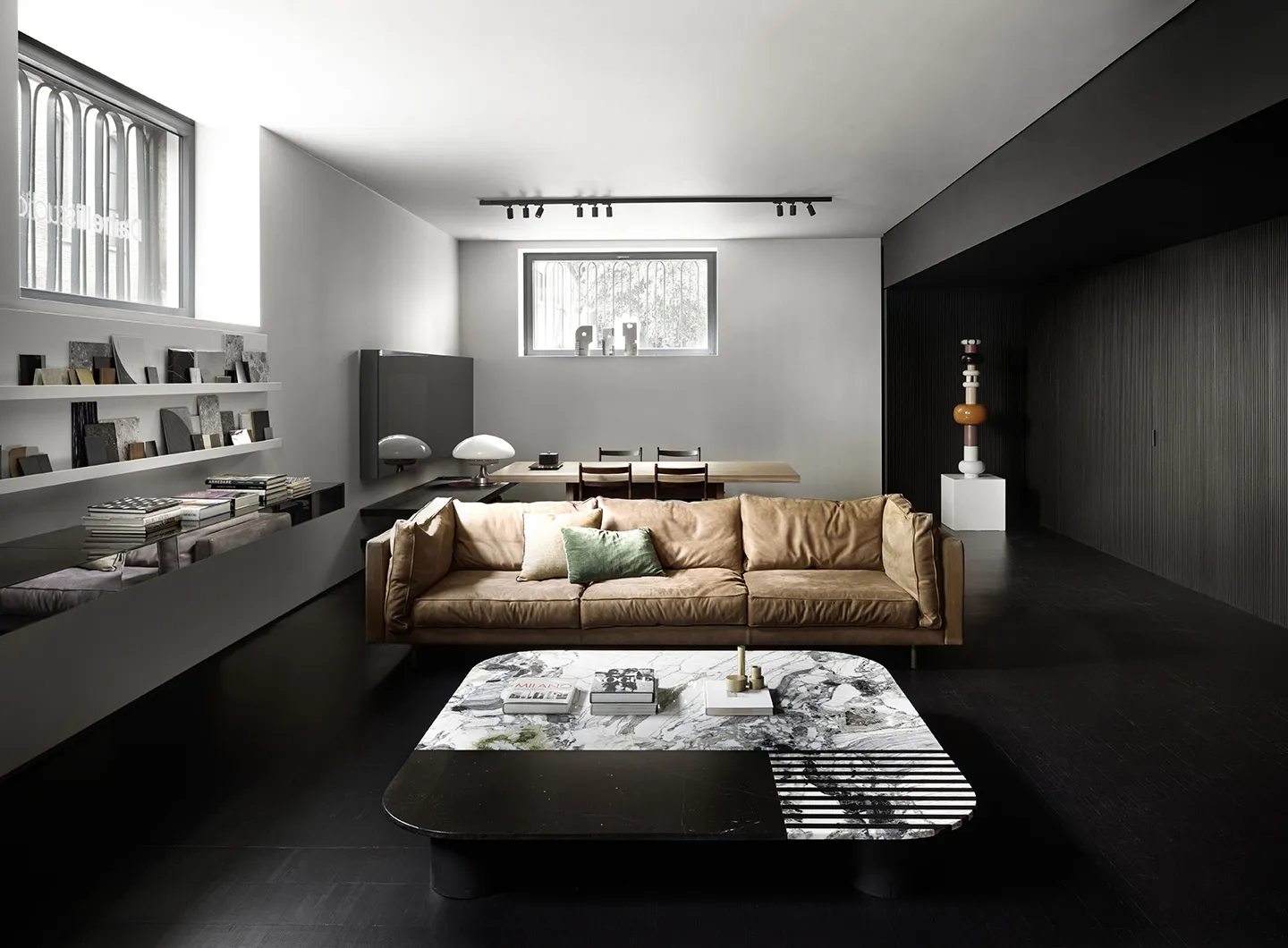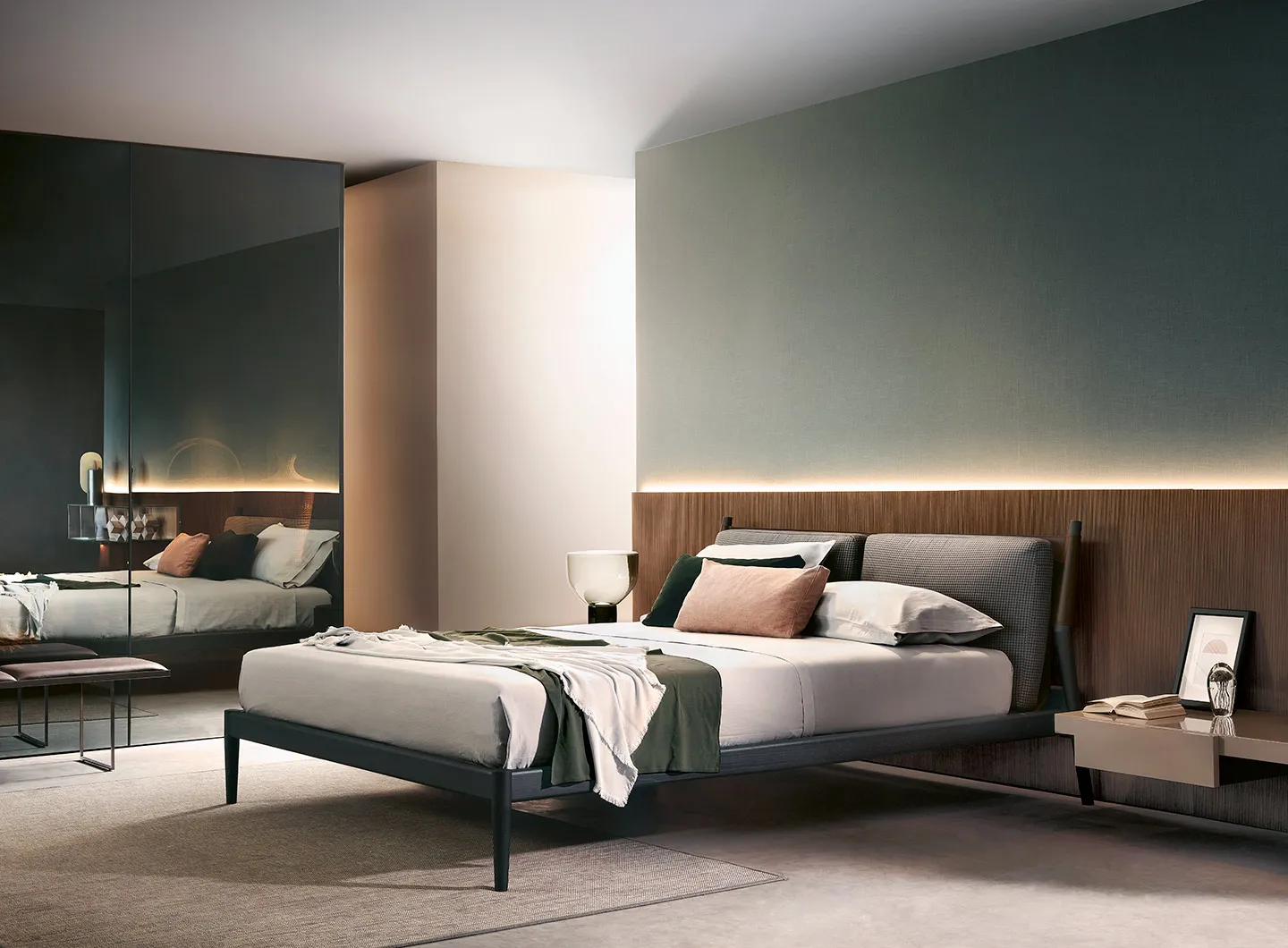In partnership with MiCodmc, a selection of establishments ripe for discovery during the 63rd edition of the Salone del Mobile.Milano, from 8th to 13th April

With an eye to the great masters of design, they create products that last over time, designed with empathy and rationality and an understated feel.
Personal and professional partnerships take the most courage and run deepest and, when they’re solid, are harbingers of success and happiness. This is the case with Leonardo and Marzia. He is a designer of objects and she is an interior architect. They met by chance during a work trip to South American and immediately realised that their paths would always be conjoined. Different yet complementary characters, in 2007 they set up Dainelli Studio, with offices in Milan, bringing together their individual characteristics and particular strengths. Constant aesthetic and formal research, a distinctive feature of their work, makes for sophisticated design, careful proportions, and harmonious forms, colours, materials and finishes. Their stylistic hallmark has always channelled references to architecture and the Italian design masters. Analysing forms and sections, breaking them down and then reconstructing them in order to create totally new objects is a frequent approach during the creative phase. There’s no shortage, however, of nods to an international and extremely contemporary aesthetic. Dainelli Studio creates interior projects for public and private spaces and has worked with prestigious furnishing companies such as Mogg, Fendi Casa, Fiam, Frag, Fratelli Boffi, Gallotti&Radice, Giorgetti, Lema, Londonart, Arketipo and Porada.
www.dainellistudio.it
We were both working in the furnishing field in Italy, but our first meeting has a rather exotic air to it! We met during a work trip to South America, on which we were both invited. Straight away there was a strong affinity, which soon led to our joining forces personally and professionally.
We set up Dainelli Studio together in 2007, working on products (Leonardo) and interior design (Marzia), respectively. The studio was based in Tuscany for years, where Leonardo was born and grew up. It was a hugely important time for us, which we still carry in our hearts and which continues to influence our projects. We are very fond of marble, for example, which is probably a legacy from the years we spent at quarries and with suppliers in the Carrara area.
In 2018 we decided to move our family and studio to Milan, which has always been a second home to us, so we could follow the companies and projects that have increasingly pointed us towards Lombardy and abroad.
It’s a constant dialogue. We have a common, shared vision on lots of things – we both love a rational, yet distinctive style, a bourgeois taste but without too many frills, we are both fascinated by the architecture and projects of the great Master of Design, Italian in particular.
At other times, clearly, our personal characteristics come to the fore. Marzia has a more decorative touch while Leonardo has a more rigorous approach. This helps with our designing. The input we give each other while we work has often led to new equilibriums, shattering both our convictions, and making for a more finished balance.
Our projects aim to narrate a contemporary way of life, discreet luxury, with objects of desire that trigger a desire to use them, rather just owning them.
We are lucky enough to collaborate with companies that we feel have an affinity with our worlds, even though they’re all very different. We find it very stimulating to translate our thoughts into the styles of different brands, the way you do with a bespoke garment. Every company has their own distinctive materials, their own processes, their own demands – this means that we learn something new each time, not just from an aesthetic point of view but also from a manufacturing one.
The materials we feel the greatest affinity with are undoubtedly the ‘classic’ materials such as wood and marble, which probably stems from our strong connection with Tuscany. The marble quarries and woods on the hills formed a natural backdrop to our daily life for many years! Our first self-produced pieces, for example, the Faces sculptures for Artemest, convey an anthropomorphic narrative through marble and quarried stone.
We want to make products that last over time, both aesthetically and formally, and we try to rehabilitate existing finishes and materials.
2020 was a year of fracture. After every fracture or crisis society changes, needs change, requirements change, and so do limitations and consumptions. The challenge facing designers in the near future will be to pick up on, interpret and respond adequately to the demands of a world with new needs and desires.
Our creative process has remained the same. We have appreciated the chance to have more time to devote to the design stage, as we did during the first lockdown, but we have also realised just how important it is for the sort of work we do to be able to meet people, go to exhibitions, see installations, travel and absorb as many stimuli as possible from the outside world.
Lots, 25 I think, first as students then with our products and installations!
We’re anticipating an edition that will certainly be different – as regards the layout of the pavilions, mobility and accessibility, the construction of the stands, the number of people there and the new products being showcased. Equally, we’re sure that it will be a very popular and much anticipated Salone del Mobile for the companies, the designers, and all those working within the sector, and for the city of Milan. We believe that it will be a powerful signal of recovery, a positive charge and a spur, after a long year of deep uncertainties.

In memoriam: David Lynch
The American director has left us at the age of 78. The Salone del Mobile.Milano had the honor of working with him during its 62nd edition, hosting his immersive installation titled “A Thinking Room”. An extraordinary journey into the depths of the mind and feelings. His vision will continue to be a source of inspiration.



 Stories
Stories



















